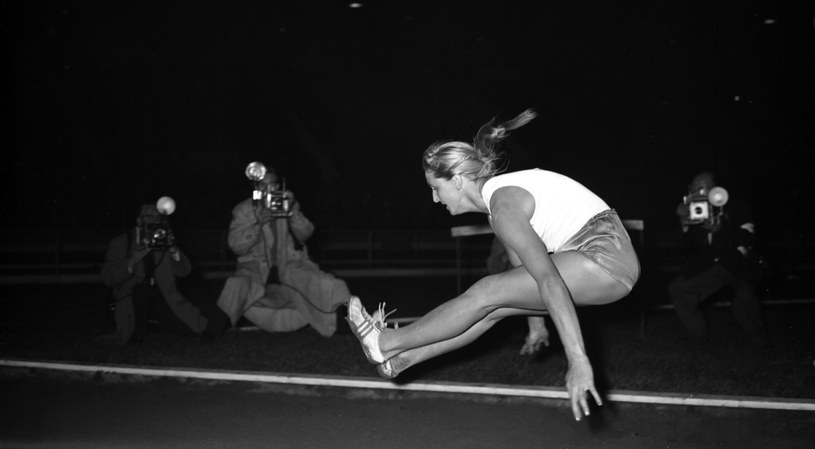Trudna decyzja A hard decision
Igrzyska Olimpijskie. Słynna polska lekkoatletka wzięła udział w zawodach w skoku w dal. Skoczyła, jak zwykle, bardzo dobrze – wynik, jaki osiągnęła, dałby jej drugie miejsce. Jednak sędziowie oceniający uczestników długo wahali się nad przyznaniem jej nagrody. Wszyscy, jak jeden mąż, w zamyśleniu przyglądali się śladowi pozostawionemu przez ciało kobiety na piasku skoczni. W końcu, pod naciskiem reprezentacji Węgier, postanowili, że nie uznają osiągniętego przez nią wyniku. W wyniku tej decyzji spadła ona z drugiego miejsca na dwunaste. Dlaczego tak się stało? Czy zawodniczka popełniła podczas skoku jakiś błąd? A może to sędziowie się pomylili? I czemu reprezentanci Węgier wtrącali się w ich decyzje?

Źródło zdjęcia: https://eurosport.interia.pl/
Mowa o Igrzyskach Olimpijskich w 1952 roku w Helsinkach. Wymieniona osoba to Elżbieta Duńska-Krzesińska. „Złota Ela” (bo tak została nazwana, kiedy 4 lata później zdobyła złoty medal w tej samej konkurencji) nie popełniła żadnego błędu technicznego podczas skoku. Jednak kiedy lądowała, odchyliła głowę do tyłu i jej długi na 60 centymetrów warkocz rozciągnął się za jej ciałem. Dlatego właśnie sędziowie mieli problem z oceną wyniku: nie wiedzieli czy uznać za decydującą odległość między belką a śladem pozostawionym na piasku przez ciało kobiety, czy pomiędzy belką a początkiem odcisku warkocza. W końcu poddali się naciskowi drużyny z Węgier, która stanowczo twierdziła, że „warkocz jest częścią ciała”, więc odległość powinna być liczona z jego uwzględnieniem. Dlatego właśnie Duńska zajęła dwunaste miejsce, a nie drugie. Przed następnymi Igrzyskami Duńska skróciła warkocz.
Olympic Games. The famous Polish athlete took part in the long jump competition. She jumped, as usual, very well – the result she achieved would give her second place. However, the judges assessing the participants hesitated in awarding the prize for long. All as one, they looked thoughtfully at the trail left by the woman’s body on the sand of the hill. Finally, under pressure from the Hungarian team, they decided that they would not recognize the result that she had achieved. As a result of this decision, she fell from the second place to the twelfth. Why did this happen? Did the competitor make a mistake during the jump? Or maybe the judges made a mistake? And why did the representatives of Hungary interfere in their decisions?

Source of the photo: https://eurosport.interia.pl/
It was about the Olympic Games in 1952 in Helsinki. The mentioned person is Elżbieta Duńska-Krzesińska. „Golden Ela” (as she was called when she won the gold medal in the same competition 4 years later) did not make any technical mistake during the jump. However, when she landed, she tilted her head back and her 60-centimeter long braid stretched out behind her body. That is why the judges had a problem with the evaluation of the result: they did not know whether to consider the decisive distance between the beam and the trace left on the sand by the woman’s body, or between the beam and the beginning of the imprint of the braid. In the end, they succumbed to pressure from the Hungarian team, which firmly stated that „the braid is part of the body”, so the distance should be counted with its consideration. That’s why Duńska took the twelfth place, not the second. Before the next Games, Duńska shortened the braid.





